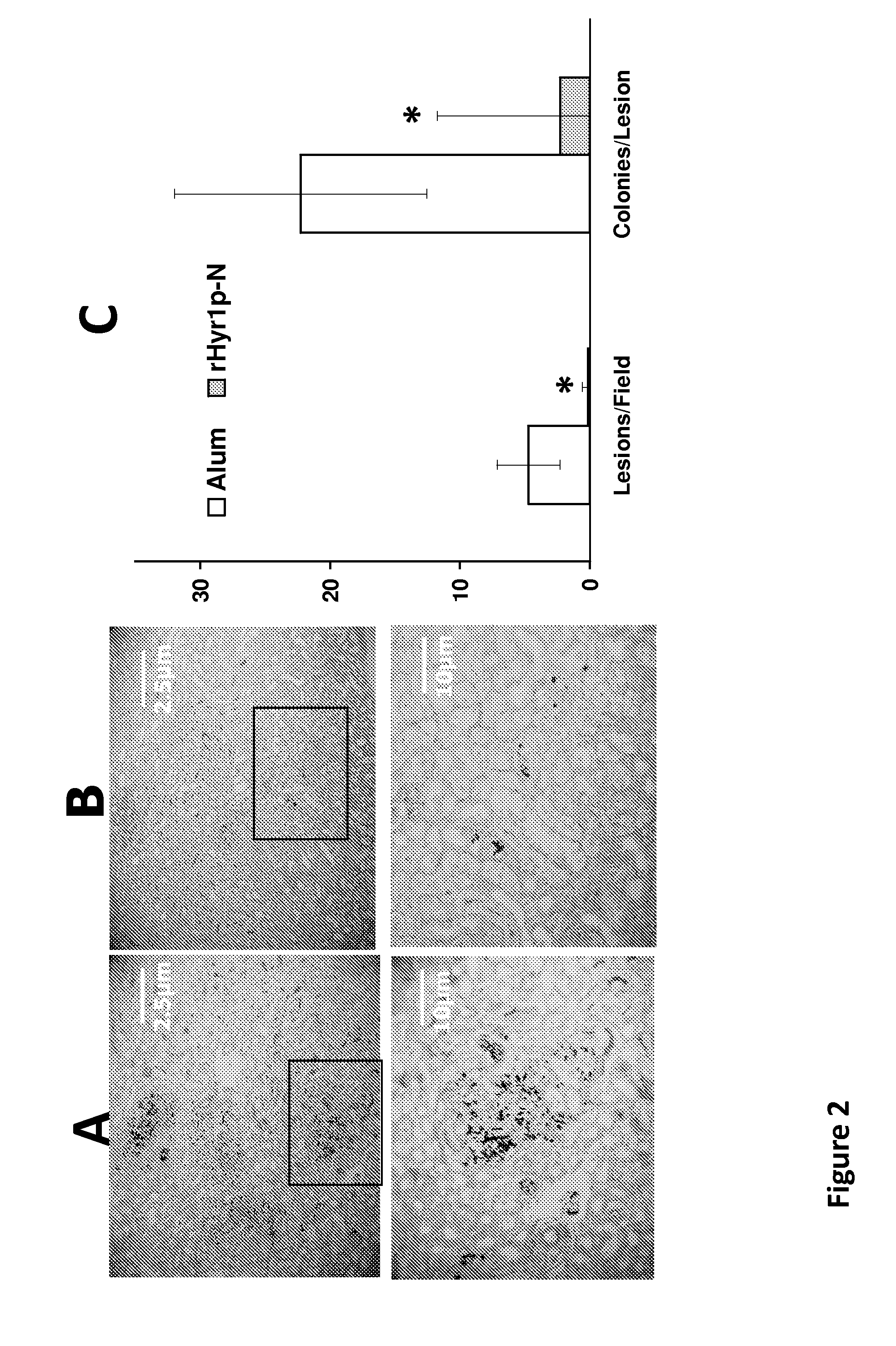Hyr1-derived compositions and methods of treatment using same
a technology of compositions and hyr1s, applied in the field of compositions and methods for detecting, treating and preventing infectious diseases, can solve the problems of unacceptably high mortality, billions of dollars in healthcare expenditure, and attributable mortality
- Summary
- Abstract
- Description
- Claims
- Application Information
AI Technical Summary
Benefits of technology
Problems solved by technology
Method used
Image
Examples
examples
[0193]The following example is to illustrate the invention. It is not meant to limit the invention in any way.
example i
Active and Passive Immunization with rHyr1-N Protects Against Hematogenously Disseminated Candidiasis
[0194]HYR1 belongs to the IFF gene family of C. albicans, which includes 12 members. It encodes a cell surface glycosyl phosphatidylinositol (GPI)-anchored protein that is expressed during hyphal formation. It has previously been shown that Hyr1p mediates C. albicans resistance to phagocyte killing in vitro and contributes higher fungal burden in organs rich in phagocytes (e.g. liver and spleen). Native HYR1 is positively regulated by transcription factor Bcr1p. It was found that autonomous HYR1 expression reversed the hyper-susceptibility to phagocyte-mediated killing of a bcr1 null mutant of C. albicans in vitro. Further, heterologous expression of HYR1 in C. glabrata rendered the organism more resistant to neutrophil killing. Previous studies also showed that a vaccine based on the recombinant N terminus of Hyr1p (rHyr1p-N) markedly improved survival of immunocompetent mice challe...
example ii
HYR1 Protein Fragments Prevent Infections by Acinetobacter Baumannii
[0237]Candida albicans is a diploid fungus that grows both as yeast and filamentous cells. C. albicans causes approximately 60,000 cases of disseminated candidiasis per year in the United States. The C. albicans HYR1 protein is a cell surface protein that confers phagocyte resistance to fungal cells by white blood cells during fungal infections. Vaccination with a recombinant HYR1 protein has been shown to protect mice against Candida infection. Moreover, passive immunization with anti-HYR1 protein antibodies protects against hematogenously disseminated candidiasis.
[0238]Through predictive structure homology modeling, the C. albicans HYR1 protein was discovered to have considerable homology to several proteins from gram negative bacteria, including Acinetobacter baumannii. Consequently, the feasibility of using active and passive immunization targeting HYR1 protein in protecting against Acinetobacter baumannii was ...
PUM
| Property | Measurement | Unit |
|---|---|---|
| Composition | aaaaa | aaaaa |
| Immunogenicity | aaaaa | aaaaa |
Abstract
Description
Claims
Application Information
 Login to View More
Login to View More - R&D
- Intellectual Property
- Life Sciences
- Materials
- Tech Scout
- Unparalleled Data Quality
- Higher Quality Content
- 60% Fewer Hallucinations
Browse by: Latest US Patents, China's latest patents, Technical Efficacy Thesaurus, Application Domain, Technology Topic, Popular Technical Reports.
© 2025 PatSnap. All rights reserved.Legal|Privacy policy|Modern Slavery Act Transparency Statement|Sitemap|About US| Contact US: help@patsnap.com



